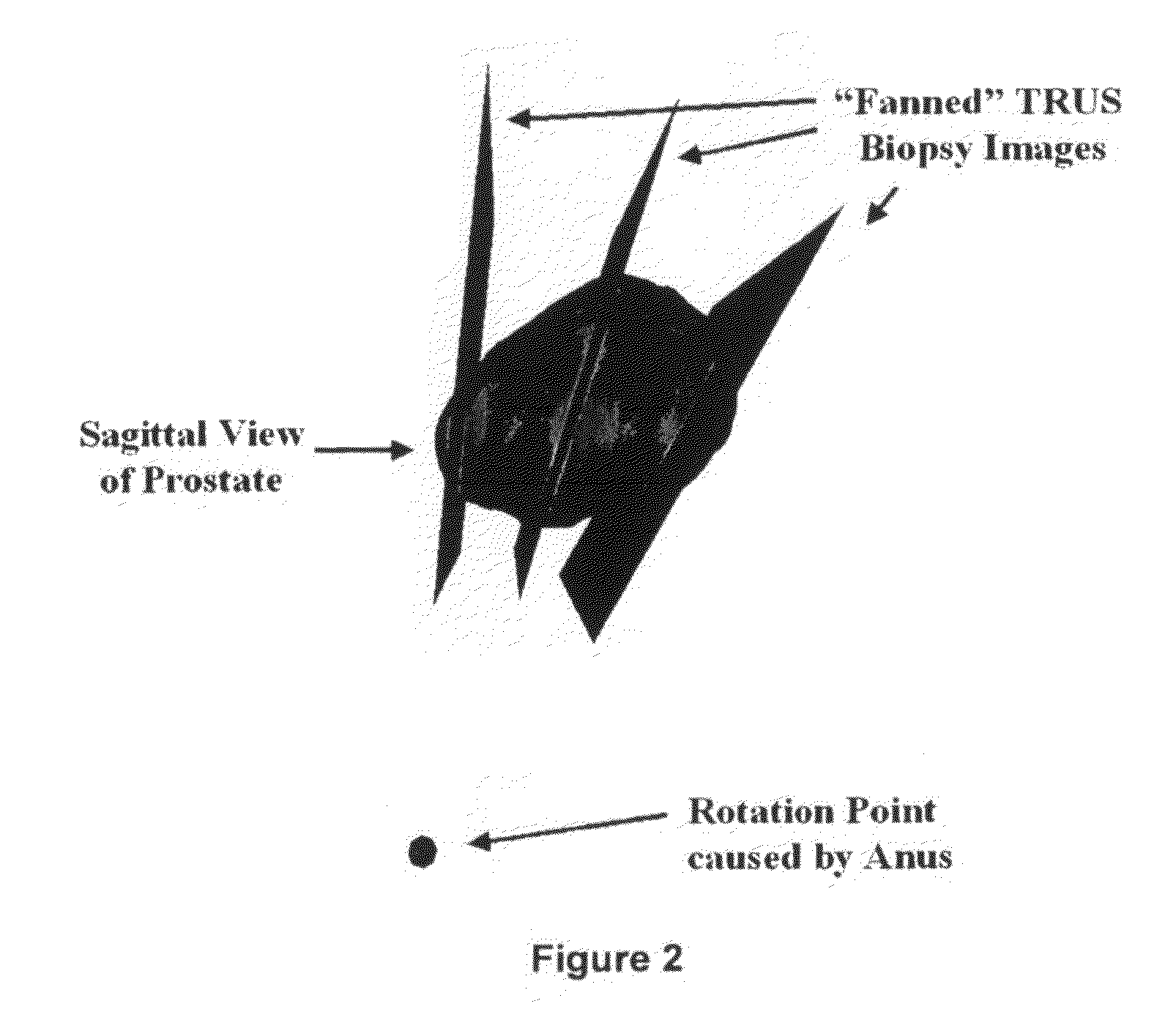3D tissue model formation from non-parallel 2D images
a tissue model and 2d image technology, applied in the field of 3d tissue model formation, can solve the problems of poor sensitivity (53%) of the prostate biopsy procedure, the test cannot definitively diagnose pca, and the inability of physicians to directly target tumors, etc., and achieve the effect of easy clinical integration
- Summary
- Abstract
- Description
- Claims
- Application Information
AI Technical Summary
Benefits of technology
Problems solved by technology
Method used
Image
Examples
Embodiment Construction
[0020]The TRUS probe currently used for prostate biopsies is designed with an “end-firing”, curvilinear ultrasound transducer, which allows the needle trajectory to remain within the 2D scan field of view during insertion (FIG. 1a). This configuration eliminates the possibility of acquiring parallel biopsy images either in the axial or sagittal planes as the probe is limited to rotational, fan-like movements pivoted around the anus (see FIG. 2). Using this probe, 3D image acquisition would require some form of mechanical assembly, as is done in 3D prostate ultrasound, or would require the physician to complete a continuous sweep of the prostate while the TRUS probe is tracked by a 6 degrees of freedom (DoF) spatial tracking device. The first option would not adhere to current clinical procedure and more importantly would remove the “free-hand” control and range of motion that many physicians prefer. The second option would have little impact on the biopsy procedure; however, to gene...
PUM
 Login to View More
Login to View More Abstract
Description
Claims
Application Information
 Login to View More
Login to View More - R&D
- Intellectual Property
- Life Sciences
- Materials
- Tech Scout
- Unparalleled Data Quality
- Higher Quality Content
- 60% Fewer Hallucinations
Browse by: Latest US Patents, China's latest patents, Technical Efficacy Thesaurus, Application Domain, Technology Topic, Popular Technical Reports.
© 2025 PatSnap. All rights reserved.Legal|Privacy policy|Modern Slavery Act Transparency Statement|Sitemap|About US| Contact US: help@patsnap.com



